You might think an ideal market for your business would be one without competitors offering similar products or services. Surely then, your business will be able to maximize profits and growth because target consumers will be forced to buy from you. But it’s not exactly that cut and dry.
While competition poses daunting challenges for businesses, such as consumer confusion, downward pricing pressure, additional marketing costs, and reduced market share, there’s also real value added by having a few companies compete within the same market space as your business.
What Is Business Competition?
Competition is the heart of a healthy market economy.
It is the dynamic rivalry between organizations that offer comparable products or services or cater to the same consumer base.
Its essence lies in the strategic pursuit of customer acquisition and loyalty, amplifying financial gains, and securing a more significant foothold in the market.
There are multiple types of competitors within the business landscape, from direct competitors and indirect competitors, to future and potential competitors.

In order to stay competitive, businesses must innovate and continually improve their products, service offerings, customer service, and marketing techniques to attract consumer attention.
Without competition, markets are more likely to grow stagnant.
When a few firms operate within and control a large section of a specific market, they get away with offering lesser products while also charging higher prices because consumers have limited options.
Market forces act as a feedback loop, and business competition is critical to a vibrant and fair economy for all.
Business competition exists in both product and labor markets.
Product market competition refers to the competition among businesses that offer similar products or services.
This type of competition can benefit consumers by giving them more choices and encouraging companies to keep their prices low and quality high.
Labor market competition, on the other hand, is the competition among workers for jobs.
This type of competition can lead to higher salaries and better working conditions for employees as employers strive to attract and retain the best talent. This article doesn’t dive into labor market competition, but it’s an important concept for all businesses.
What Are the Advantages of Competition in Business?
Competition in business can have numerous potential benefits, including:
- Expanding the market
- Building brand loyalty
- Creating opportunities for niche development
- Driving innovation
While some may view competition as a threat, healthy competition can push your business to improve and succeed in the long term.
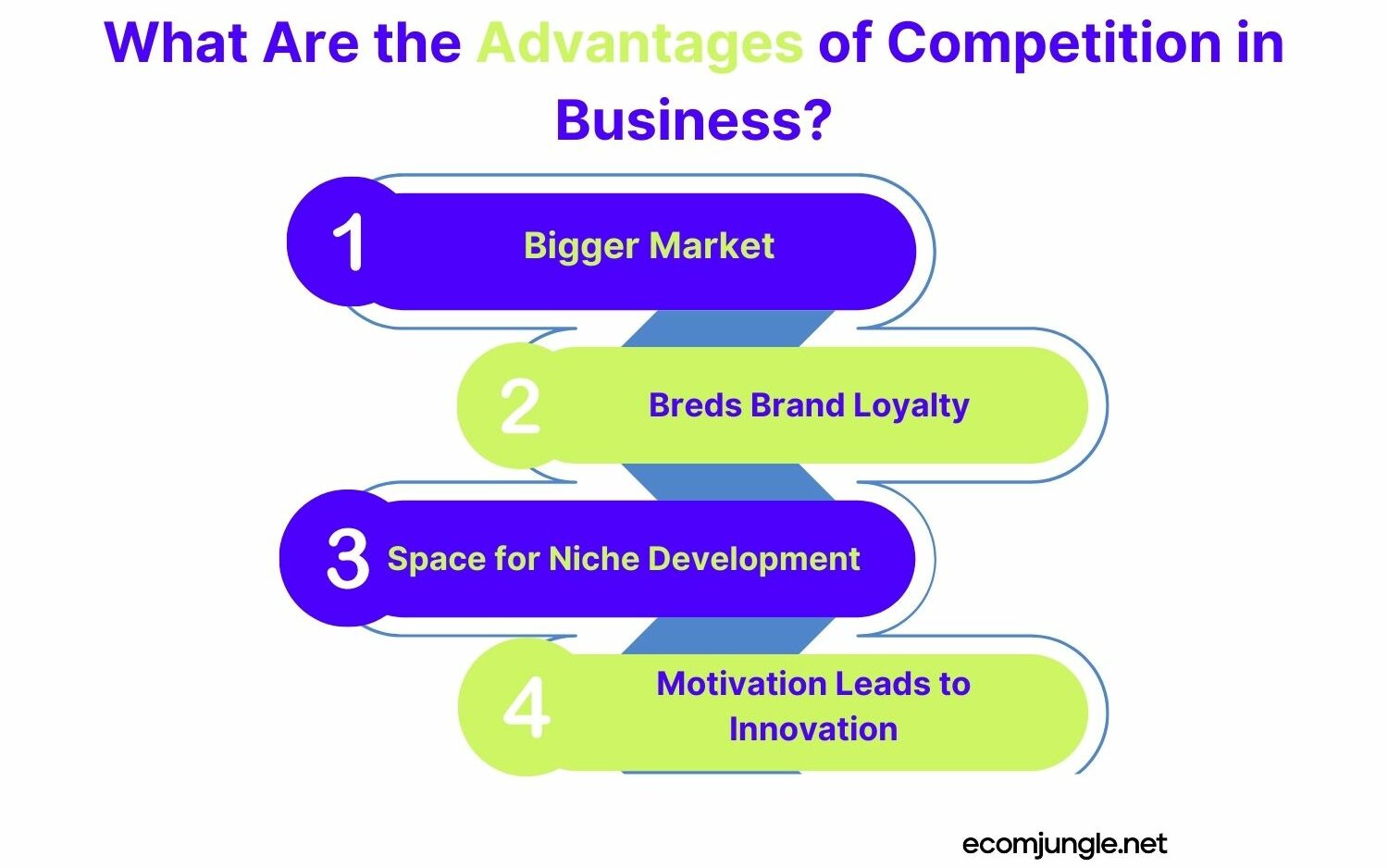
Bigger Market
One of the biggest misunderstandings concerning competition is that it reduces your pool of customers.
By increasing supply, the demand for your product decreases, right?
On the contrary, having other firms working within the same sector as your business helps to make the market bigger.
If you and your competitors are launching compelling marketing campaigns to attract existing customers, you are also likely to attract new customers to the space.
Of course, new and existing customers will be split between you and your competitors, but if you continue to offer a superior product and great value, you can take advantage of the increasing market size that results from healthy competition.
Breds Brand Loyalty
There’s limited brand loyalty in a market with no alternatives.
Consumers can’t choose to be loyal to your brand because of your top-notch customer service and high-quality products and services if they have nothing to compare it against.
There’s something to be said about having a choice that encourages consumers to make a choice instead of deciding not to continue purchasing the product.
Maybe a customer tried to switch to a competitor to take advantage of a promotion or special but was unsatisfied by how the brand handles things or the product they offer.
Because you have made positive connections with your customers, they are more likely to hold a sense of brand loyalty and return to what they know works.
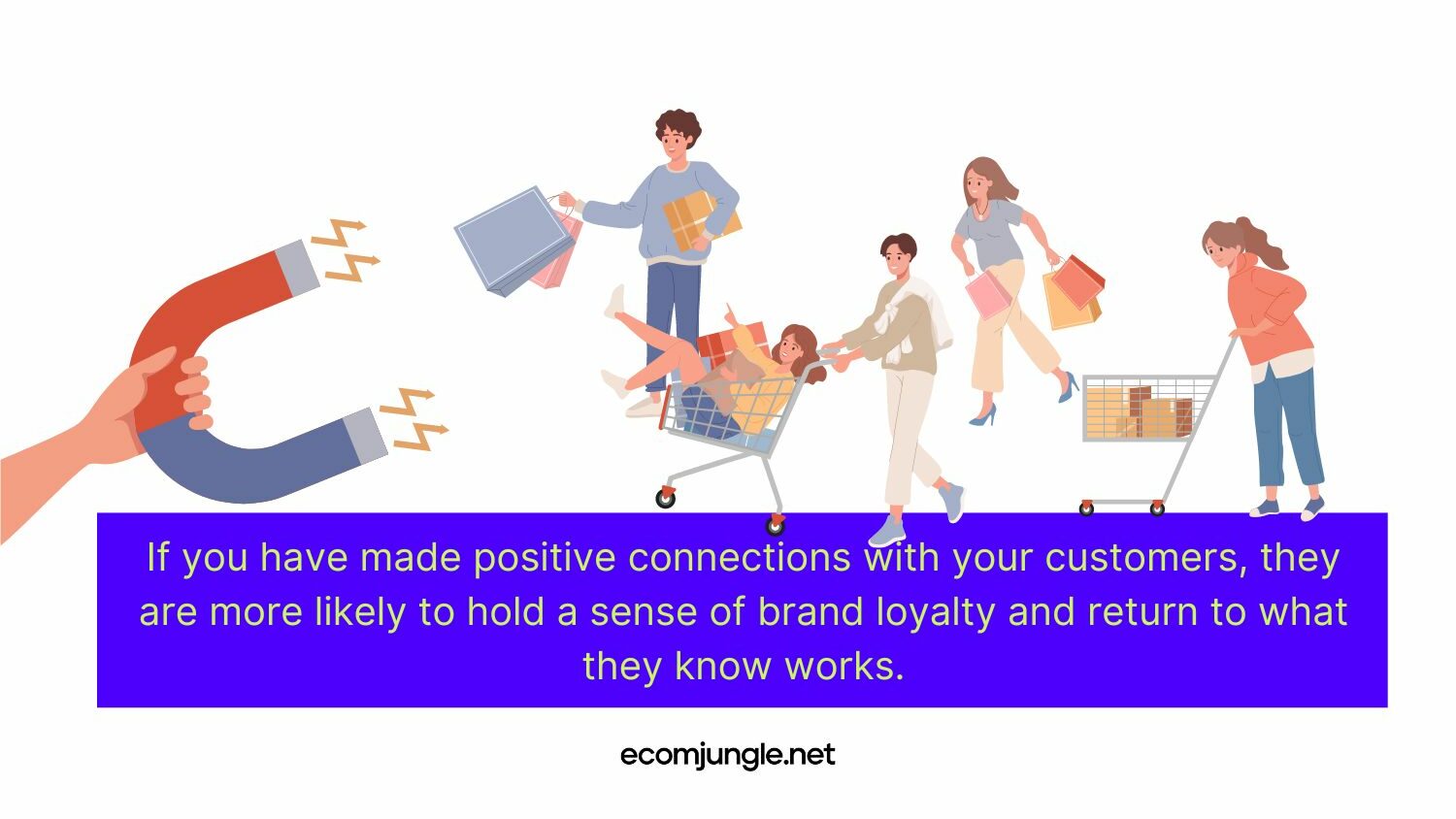
Space for Niche Development
There is room for niche development when many businesses operate within a section of the market.
What is niche development?
Well, it’s the ability to specialize your product or service offerings to attract a specific audience with specific needs or requirements.
Consider you are operating an e-commerce business within the health and beauty industry. Consider adding digital products to your website, like ‘Recipes for 10 Nourishing Hair Masks’, that your customers can purchase and download.
This is an opportunity to offer something that your competitors don’t. You can also throw in a few recipes that suggest or require some of your products.
With a niche, you are also more likely to build a set of loyal followers. You can leave your competition to fight over the broader market while you attract customers with your expertise within a specific area.
Pro Tip:
Conduct market research to find voids in the market or weaknesses of competitors. Consult your existing customers to find pain points that customers are dealing with. This can provide a source of inspiration for areas your business could specialize in.
Motivation Leads to Innovation
As the saying goes, ‘competition breeds excellence.’
If you want to survive long-term, you will need a high-quality product that an emerging competitor can’t easily replace.
When competitors move into your market, they light a fire under your company to provide the best customer experience and customer support.
Your e-commerce business will be motivated to look for new innovative product features and use cases and identify new areas of the market that you can expand into.
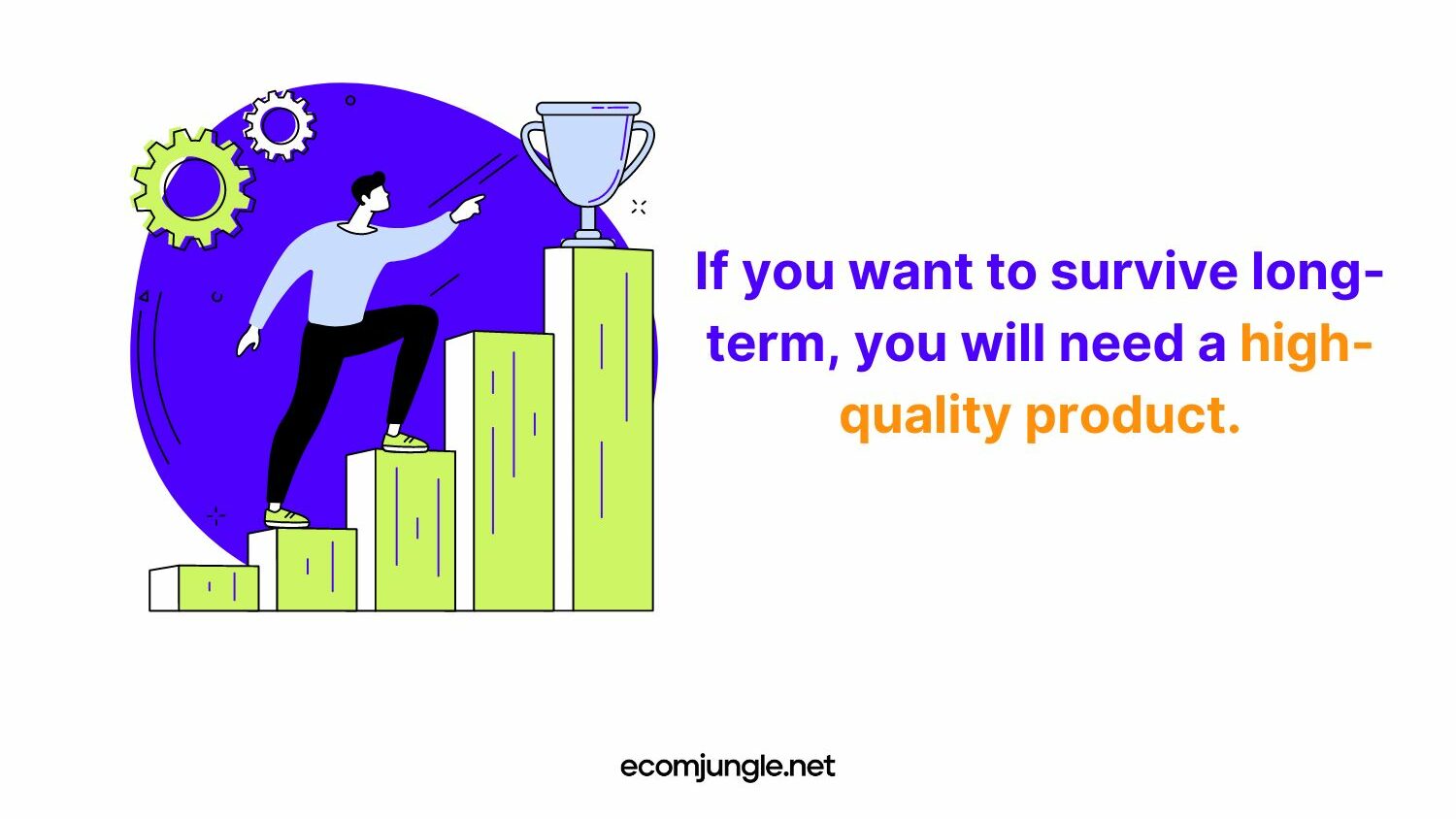
What Are the Disadvantages of Competition in Business?
Competition can bring many benefits to businesses, but it can also bring some disadvantages:
- Confused consumers
- Sliding prices
- Additional costs
- Smaller share of the market
These are among the challenges that businesses face in competitive markets.
Your business must overcome these challenges to thrive in a competitive market and survive over the long term.
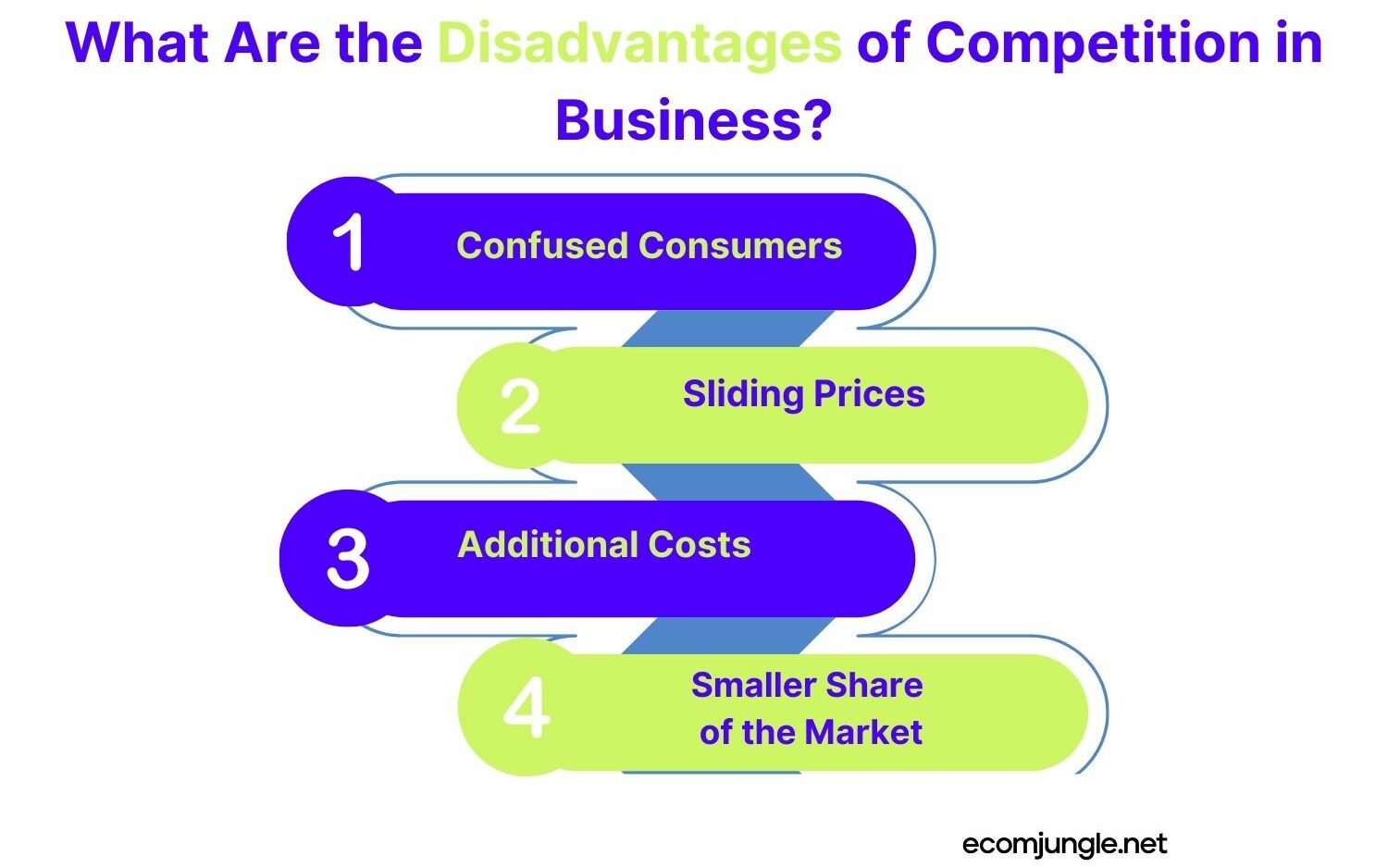
Confused Consumers
When faced with an abundance of similar products or services, customers may find it challenging to distinguish the best option.
This confusion can lead to indecisiveness and dissatisfaction with their purchase. Consumers may even be so confused that they decide against making a purchase.
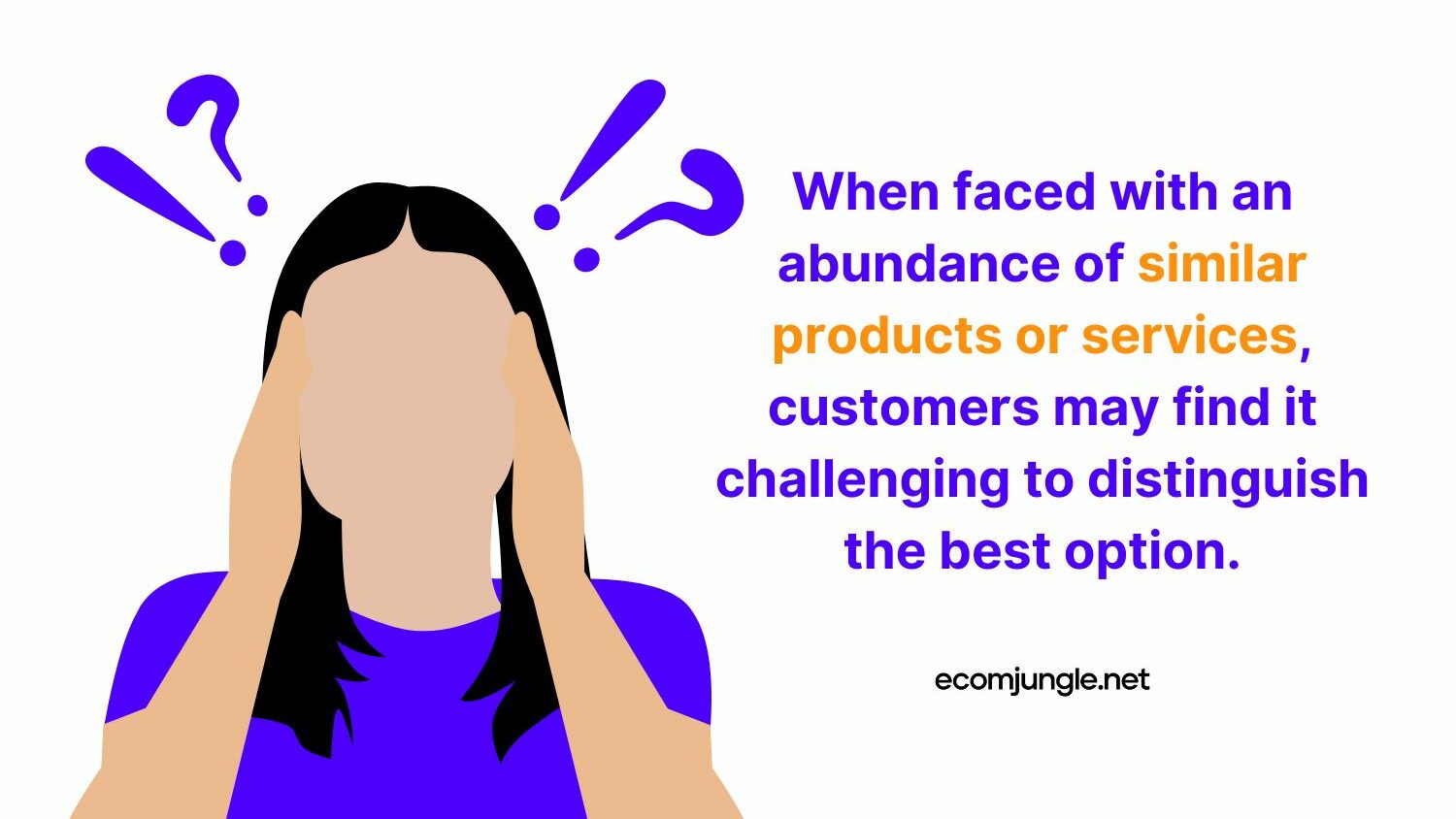
You can address this issue by building a strong brand name associated with high-quality offerings.
Try utilizing strategies that create an emotional connection with consumers to develop a deeper, more meaningful relationship with your brand.
Prop Tip:
Consider creating marketing materials and content that can explain how your product differs from competitors. This can dispel confusion and help consumers choose you over competitors.
Sliding Prices
In most cases, more supply in the market means prices fall.
Businesses looking to attract consumers within a competitive landscape will often lower their prices.
If consumer decision-making is being driven by prices more than the products themselves, this can even trigger price wars between competing brands.
In 1992, competing airlines like American Airlines and Northwest Airlines fell into a pricing war that increased sales volume but caused revenue losses.
This is especially common for products with limited ways to differentiate between brands.
One example might be smartphone charging cables.
As long as the charging cable charges quickly and performs well, customers will generally choose the cheapest option.
While this is all-around good for the consumers, it is not preferable for the brands. Your business may need to cut costs elsewhere to remain profitable in light of falling prices.
Avoid falling into price wars whenever possible. There are other ways to attract customers that don’t cut into your bottom line so severely.

Additional Costs
Competitive markets force businesses to move beyond the traditionally accepted methods of marketing.
What works in a market with low competition won’t help you stay ahead in a market of competing brands.
Marketing is a critical component of your success within a competitive sector.
Your business must be open to trying new marketing techniques that target customers and convince them to choose your products over similar products.
While most companies want to focus on lowering costs, this may force you to inflate your marketing and advertising budgets.
You’ll also want to consider big data analytics.
Analytics reveal data-driven insights that help you differentiate your brand and its competitive strengths.
According to Forbes, 74% of firms say their competitors already use big data.
While competitive analysis can reveal valuable information about your competitors methods and strengths. And while analytics tools and data analysts can be costly, ranging up to $10,000 if you have many employees needing licenses, you’ll find yourself at a disadvantage without this information.
Smaller Share of the Market
Splitting the market into small market shares is another disadvantage of competition.
Your market share is the percentage of industry revenue going to your company.
Pro Tip:
You can calculate your market share by dividing your business’s total sales revenue by your industry’s total revenue (over a set period). For example, if your business brought in $1 million in revenue and the total industry revenue was $5 million, then you have 20% of the market share.
If your competitors actively work to differentiate themselves and provide high-quality products to consumers, they can carve out a section of the market.
If they can turn this section into a loyal consumer base, this can limit the market share available to you. You will have to work much harder to convince the loyal customers that belong to your competitor to convert to your product.
Market share can act as a ceiling on your potential growth.
In this situation, consider expanding abroad, where you can find new customers across multiple countries.

Wrapping Up
When discussing the advantages and disadvantages of competition, it’s crucial to clearly understand how these different factors are interrelated and how they impact each other.
Without this broader perspective, you may struggle to develop effective business strategies that can succeed in a competitive marketplace.
Although competition can sometimes create confusion among consumers, put pressure on prices, increase marketing expenses, and shrinking market share, it can also lead to larger markets, stronger brand loyalty, opportunities for niche development, and inspiration for innovation.
By understanding these various benefits and drawbacks, businesses can make informed decisions about their marketing approaches, product development, and overall growth plans.
By paying close attention to market trends and using advanced tools and techniques, businesses can set themselves apart from their competitors, attract and retain customers, and drive revenue and growth in a crowded marketplace.
Ultimately, even as an e-commerce business owner, you don’t want an economy without competition.
A healthy dose of competition is vital for a dynamic and equitable economy, where businesses are incentivized to innovate and enhance their offerings to meet consumers’ needs.
Frequently Asked Questions
The advantages of competition in business include lower prices, higher quality goods and services, and increased innovation. In a competitive marketplace, businesses strive to differentiate themselves, leading to a wider range of options for consumers.
Additionally, competition pushes businesses to be more customer-focused, addressing consumer needs and often resulting in higher levels of customer satisfaction.
The disadvantages of competition in business include difficulty in brand differentiation, pricing pressures, increased marketing expenses, and challenges in gaining market share.
Fierce competition can make it hard for businesses to establish their brand identity and stand out from competitors, forcing them to lower prices and spend more on marketing and advertising. This can impact their profits and limit potential growth, making it difficult to reach new customers.
Competition can cause problems for businesses, such as uncooperative behavior, market saturation, price wars, and reduced profit margins. It may also negatively impact public goods and society. However, a healthy level of competition remains crucial for a thriving and just economy.